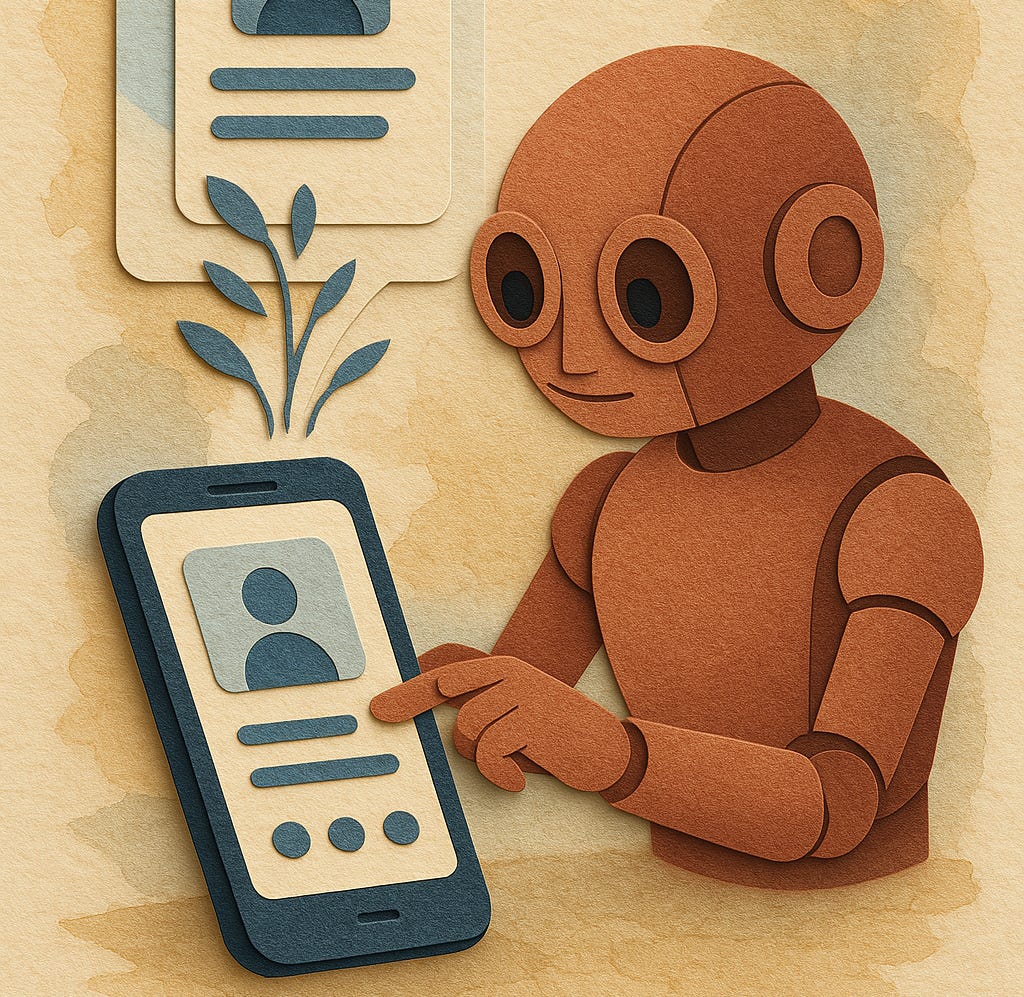Generating UI on Demand
What's the next frontier of user interface? What will just-in-time AI-generated interfaces look like?
Welcome to Infinite Curiosity, a newsletter that explores the intersection of Artificial Intelligence and Startups. Tech enthusiasts across 200 countries have been reading what I write. Subscribe to this newsletter for free to directly receive it in your inbox:
Apple launched iPhone launched in 2007. They didn’t just introduce a new smartphone, but rewrote the rules of how we interact with technology. Before it, mobile phones were clunky. They were often tethered to physical keyboards made of fixed plastic buttons. These keyboards dictated the user experience: rigid, unchanging, and limited by hardware.
The iPhone had a capacitive touchscreen and a virtual keyboard. Suddenly the interface wasn’t bound by physical constraints. It was software! It was adaptable and endlessly customizable. This shift from plastic to pixels wasn’t just a design choice.
It was a fundamental shift that turned the phone into a canvas.
For startups and VCs, this turned out to be a goldmine. We suddenly had a platform where new ideas could flourish without needing to reinvent the hardware wheel.
Why did the virtual keyboard win?
It’s simple. It won because of flexibility! A physical keyboard locks you into one layout, one language, and one set of functions. A virtual keyboard can morph into anything: a QWERTY layout, a numeric pad, or even emojis. You can tailor it to the moment.
This adaptability opened doors for app developers. They could now dream up interfaces that didn’t need to conform to a fixed input method. For startups, this meant lower barriers to entry. You didn’t need to build a device. You can just code an app.
Can AI enable a new fundamental shift?
Fast forward to 2025 and AI is taking the virtual keyboard’s legacy to a whole new level. With AI, we’re no longer stuck with static layouts or even pre-designed virtual keyboards.
Imagine this: Every time you open an app, AI generates a user interface (UI) on the fly. This UI is customized to your habits, context, and needs. Need to type a quick email? The AI predicts your most-used phrases and pops up a streamlined keyboard with shortcuts. Editing a photo? The UI shifts to a gesture-based palette optimized for your creative flow.
For startups, this is very attractive. AI-driven UI would mean that you can deliver hyper-personalized experiences.
Can AI really generate a new UI for every interaction?
Yes! And it’s already happening in bits and pieces. It can analyze user behavior such as how fast you type, what you tap, even your mood based on word choice. And adapt the interface in real time. It’s not perfect yet. There are issues to contend with such as lag and privacy, but the potential is staggering. Startups that crack this could dominate the next wave of consumer tech.
The old playbook of building a slick app and hoping it sticks might not be sufficient anymore. Users expect personalization.
Take a hypothetical startup FlexUI that uses AI to tailor interfaces for remote workers. It offers a minimalist setup for focused writing or a dynamic dashboard for multitasking.
The advantage here is cost. Traditional UI design is labor-intensive. It requires teams of designers to iterate endlessly. AI slashes that overhead and lets startups punch above their weight.
The big risk here is execution. AI is powerful but also finicky. Bad data or buggy algorithms can churn out unusable interfaces. And users are very unforgiving when it comes to apps. Also there’s the privacy elephant in the room. Tailoring UIs means collecting user data. A misstep here could tank your reputation.
Betting on the Interface Gold Rush
The iPhone’s virtual keyboard taught us that interface innovation drives adoption. Now AI is amplifying that lesson. Stickiness matters a lot in apps. An app with an AI model that learns and adapts keeps users hooked. This boosts retention metrics. This could be a product that evolves with its audience.
The biggest opportunity for generative UI is in vertical markets.
General consumer app market is crowded. There are too many of them! But verticals like healthcare and education are begging for tailored UIs. A startup that uses AI to generate interfaces for knowledge professionals just in time of their need could be huge.
Where do we go from here?
The iPhone’s jump from plastic to virtual keyboards was a leap. AI-generated UIs could be a teleport. We’re talking interfaces that don’t just adapt to your fingers but anticipate your thoughts.
Will this kill the app as we know it? Maybe it won’t kill it. But it will certainly transform it. Apps might become less about fixed designs and more about fluid AI-driven experiences. Plastic keyboards are long gone. Static pre-defined UIs could be next.
If you're a founder or an investor who has been thinking about this, I'd love to hear from you.
If you are getting value from this newsletter, consider subscribing for free and sharing it with 1 friend who’s curious about AI:




